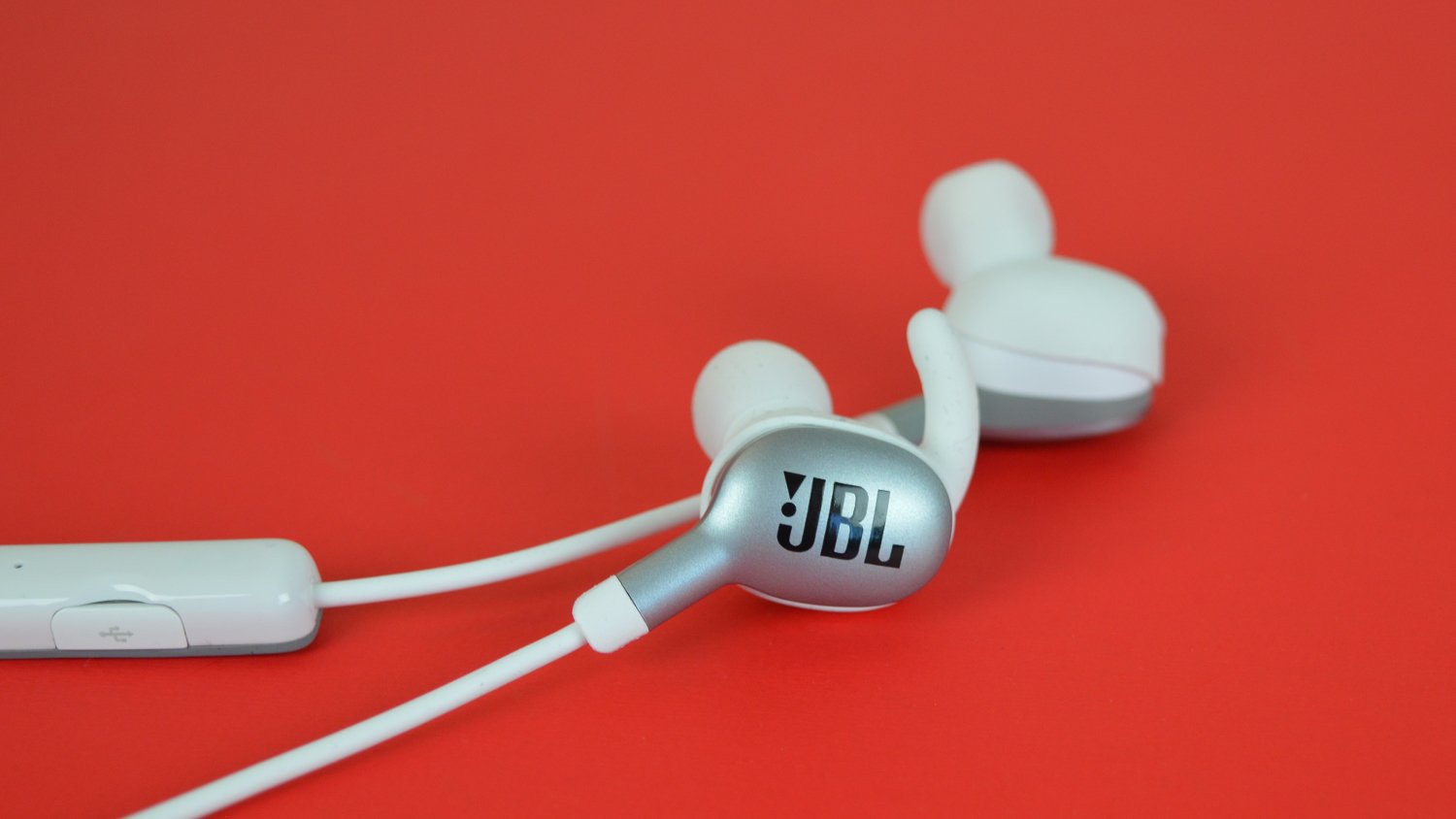JBL is a serious and growing force in the headphone world, and the company has launched product after product in the past few months. When it comes to in-ears, we recently reviewed the E15 and E25BT headphones — but so far we haven’t had the chance to look at any in-ears from the Everest series. That, however, has now changed, with the new JBL Everest 110 headphones.
The Everest series is JBL’s flagship line of headphones, so there’s a lot to expect with the Everest 110. Do they live up to the Everest name? We put them to the test to find out.
Design
The first thing you’ll notice about the JBL Everest 110 headphones is their design, and they don’t look bad. They’re very obviously built for someone who wants a pair of in-ear headphones that won’t fall out — and they’re clearly perfect for sports.
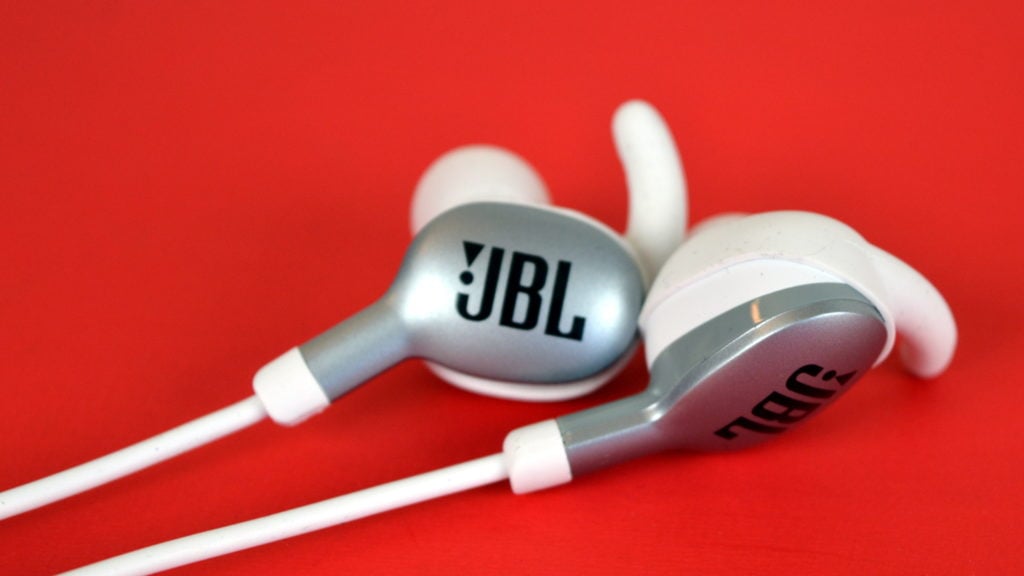
The headphones themselves come in a few different colors — blue, black, and white — and we’re reviewing the white ones. Judging by the photos on the JBL website, the black headphones are a little sleeker, but hey, the white ones look pretty great too.
The in-ear units themselves are simply designed, featuring a white and silver combination, and the JBL logo appropriately placed for the world to see when you’re wearing the headphones. Part way down the right side of the cable is where you’ll find the control remote which offers a basic three button layout — volume up, volume down, and a center multi-use button — as well as a microUSB charging port on the side.
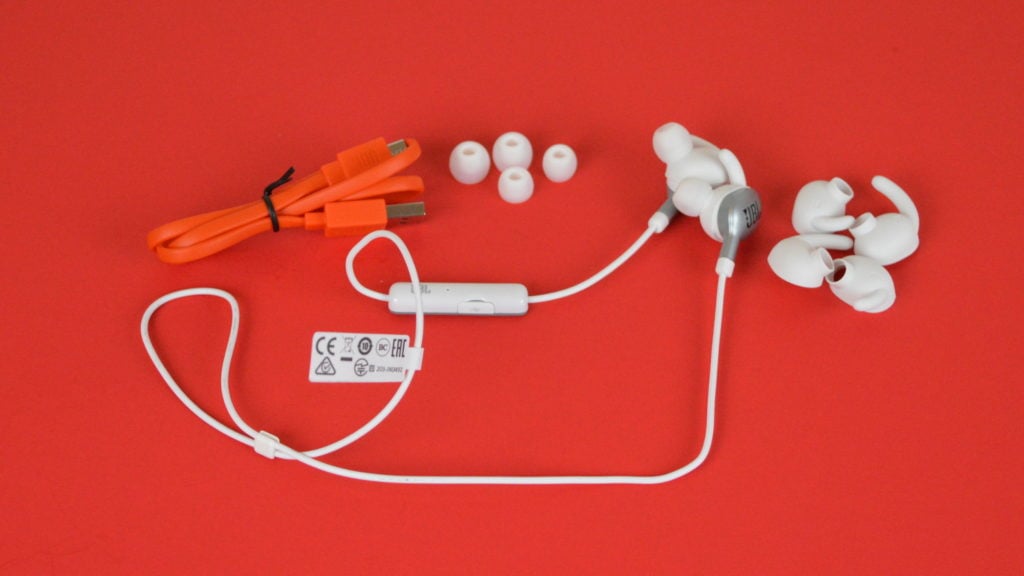
In the box, you’ll find a slew of accessories, including a total of three pairs of ear tips, three pairs of covers/sports wings, and a microUSB cable. There’s no carry case or bag here, which is a bit of a shame considering the fact that the JBL Everest 110 headphones are built to be portable, but it’s definitely not a deal-breaker to not have one.
Comfort
Because these headphones are built for on-the-go use and for sports, they need to be relatively comfortable. Of course, they’re fighting an uphill battle — in-ear headphones are generally the least comfortable type of headphones in the headphone world. Still, they’re not overly uncomfortable, but there are a few issues too.
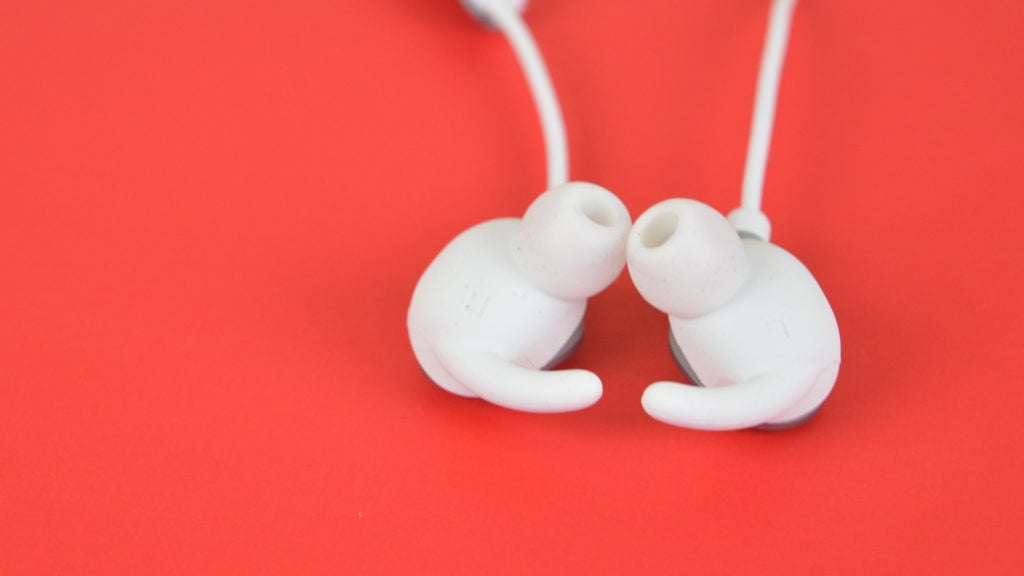
For starters, the in-ear unit is somewhat large, which can get uncomfortable over time. That’s not to say you won’t get used to it — you will — but it will take some time and in the meantime you might experience some discomfort.
Still, in general the headphones aren’t all that bad, and there are definitely in-ear headphones that are less comfortable than these.
Sound
Design and comfort are important enough, but perhaps the most important thing to consider here is how the headphones sound. Thankfully, they sound pretty good.
For starters, the bass on the headphones is relatively powerful — more so than you might expect on a pair of in-ear headphones. The bass response extends quite low too, so beyond there being a bump in bass response, that bump gets lower than many other in-ear headphones. It’s definitely not an overly natural sound — those looking for accuracy might want to keep looking, but those that like bass will appreciate what these headphones have to offer.
The mid-range is a bit of a rollercoaster ride, but not necessarily in a bad way. The low-mids are relatively warm and present without straying into muddy territory, while the high-mids and low-highs seem to have quite a boost.
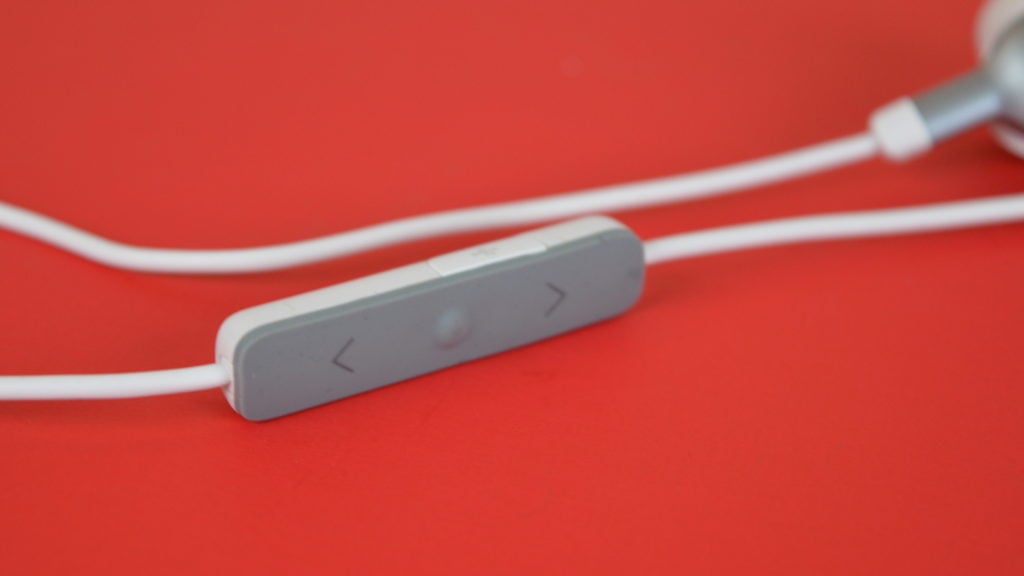
The high frequencies on the JBL Everest 110 headphones are there, but they could definitely be clearer and more defined. The highs are definitely there, but it just didn’t receive the treatment that we would have wanted.
The headphones generally sound good, but as you can see they’re not perfect.
Performance
According to JBL, the JBL Everest 110 headphones can get 8 hours of use on a charge, although that will vary depending on your usage. We didn’t quite hit the 8 hour mark, but we can certainly see how it would be possible if you listened a little quieter than we did. That 8 hour battery life is fine, but not great. If you’re good at keeping your headphones charged, it should be an issue — but if you often forget, you may have some issues.
The Bluetooth connection on these headphones is Bluetooth 4.1, and you’ll get a standard connection of around 10 meters or 33 feet. In general the headphones were good at staying connected and we didn’t really experience too many skips or connectivity issues except at unreasonable distances.
Conclusions
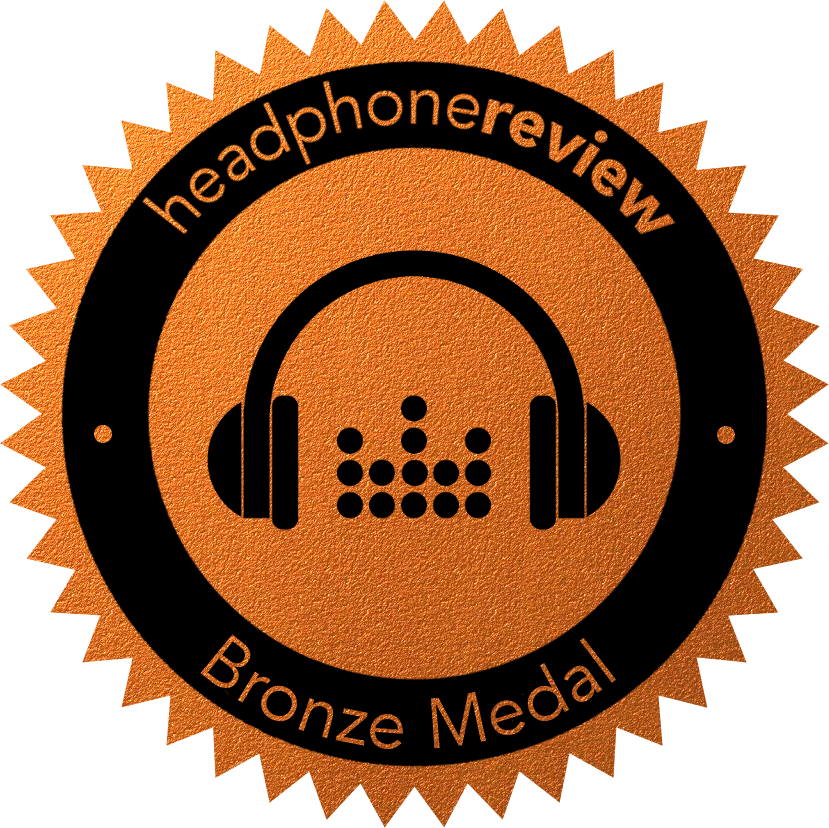 The JBL Everest 110 aren’t bad, but they seem to have missed the mark on a few things. For starters, they’re not all that comfortable, and the sound profile could use some work. Still, at $100 they’re not a bad option.
The JBL Everest 110 aren’t bad, but they seem to have missed the mark on a few things. For starters, they’re not all that comfortable, and the sound profile could use some work. Still, at $100 they’re not a bad option.
But are they the best? Well, probably not. The Focal Spark Wireless headphones are a better choice for those that aren’t necessarily too concerned about their headphones being sports-focused, but if you do want sports-focused headphones we recommend the JLab Audio Epic2’s, which come at the same price as these.
Still, these are pretty decent — and because of their great design and decent sound quality, we’ve awarded them the Headphone Review Bronze Medal.
| Store | Price |
|---|---|
| $99.99 | |
| JBL | $99.95 |
| Frequency response | 10Hz – 22kHz | Active noise cancellation |
No |
| Driver size | 5.8mm | Noise attenuation | Unknown |
| Driver type |
Dynamic | In-line controls | Yes |
| Design |
Closed | Microphone | Yes |
| Sensitivity | 96dB | Eartip material | Gel |
| Rated impedance |
Unknown | Magnet material | Unknown |
| Total harmonic distortion |
Unknown | Water resistance | No |
| Rated input power |
Unknown | Battery life | 8 hours |
| Maximum input power |
Unknown | Wireless distance | 10m (33ft) |
| Wireless connection |
Bluetooth 4.1 | Cable length | N/A |
| Wired connection |
No | Case type | N/A |
| Detachable cable |
No | In-the-box |
|
| Weight | Unknown | Colors | Blue, black, white |


